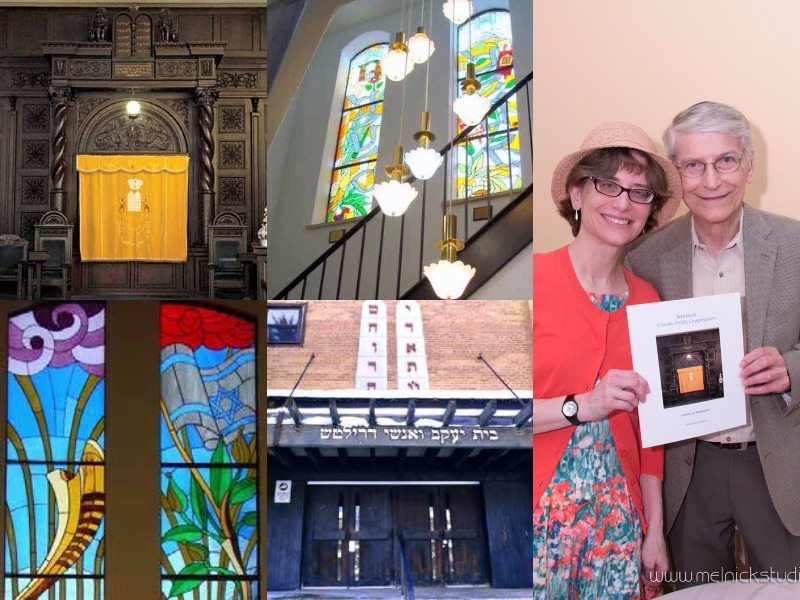It was a visit to her hometown shul, Beth Jacob V’Anshei Drildz Congregation, that inspired Janine Sherr to document the North York synagogue’s history and former glory with a commemorative book.
“I felt a sense of emptiness as I glanced at all the gold plaques on the back of the benches, remembering all the women who used to sit near me who were now gone,” said Sherr, who recalled a visit to the shul several years ago while in town from her current home in New York.
“Of course, I missed my beloved mother the most. We would always sit together on yom tov, and now she is no longer with us. Then I thought, instead of focusing on loss, why not create a book of memories that would serve as a tribute to all of the people who were part of this community for so many years?”
The book, published in late May, includes chapters about the shul’s history, holidays at the synagogue, the sisterhood and brotherhood organizations, the late Rabbi Moses J. Burak – who served as its spiritual leader for 40 years until 2002 (and was a former CJN columnist), – Chazzan Moshe Ginz, and also includes photos provided by members.
Beth Jacob’s story dates back to 1905, when a space on Elm Street was purchased. In 1919 a property at 23 Henry Street was purchased. It was one of the largest Orthodox synagogues in Toronto at one point. But in the early 1960s, when the Jewish community began moving north, a decision was made to move the congregation to Overbrook Place in Bathurst Manor, where it still stands today.
“I grew up in the shul in the ’70s and ’80s, when it was a very bustling and vibrant community,” said 45-year-old Sherr.
“At that time, it was the centre of Jewish life. This was before Thornhill. The shul itself was packed with people. On Yom Kippur, it was standing room only, there was an active brotherhood and sisterhood, and a lot of things going on. It was a very warm environment and dynamic environment,” Sherr said.
“It’s still there, but it’s a smaller community now. I was searching for a way to capture it all, to remember that period of time and also to pay tribute to the people who founded the shul, and the leaders of the shul, many of whom were immigrants, many of whom were Holocaust survivors who came to the country with nothing and founded this community, this life there.”
She said when she decided to put a book together, she wanted it to be a collaborative effort.
“My father, Michael Muller, helped me to locate former members of the shul and went to people’s houses, taking his iPad with him, snapping photos of their pictures so that I could include them in the book. He also reviewed the text for accuracy and verified that the information and names were correct,” Sherr said.
She said in addition to collecting photographs from decades past, a questionnaire was circulated among the members so that specific memories and anecdotes could be incorporated into the book.
She said when the book was released in late May during a book launch held at the shul, the congregants were excited about it. “People said, ‘This is like when a yearbook would come out!’ There’s an emotional element. It’s a walk down memory lane.”
Although Sherr has been living in New York for the past 12 years, she said she still feels like a part of the shul’s extended family when she visits.
“Everyone sort of knew everyone and felt connected. I think that feeling kept with me all these years. I live in New York and I go to a different synagogue here, but it’s not the same. Of course, your childhood is never the same, but that community had a special connection to each other,” she said.
“I have a sense of gratitude to these people, to the rabbi, the leaders of the sisterhood, the gabbaim – everyone who made things happen in the shul.”
